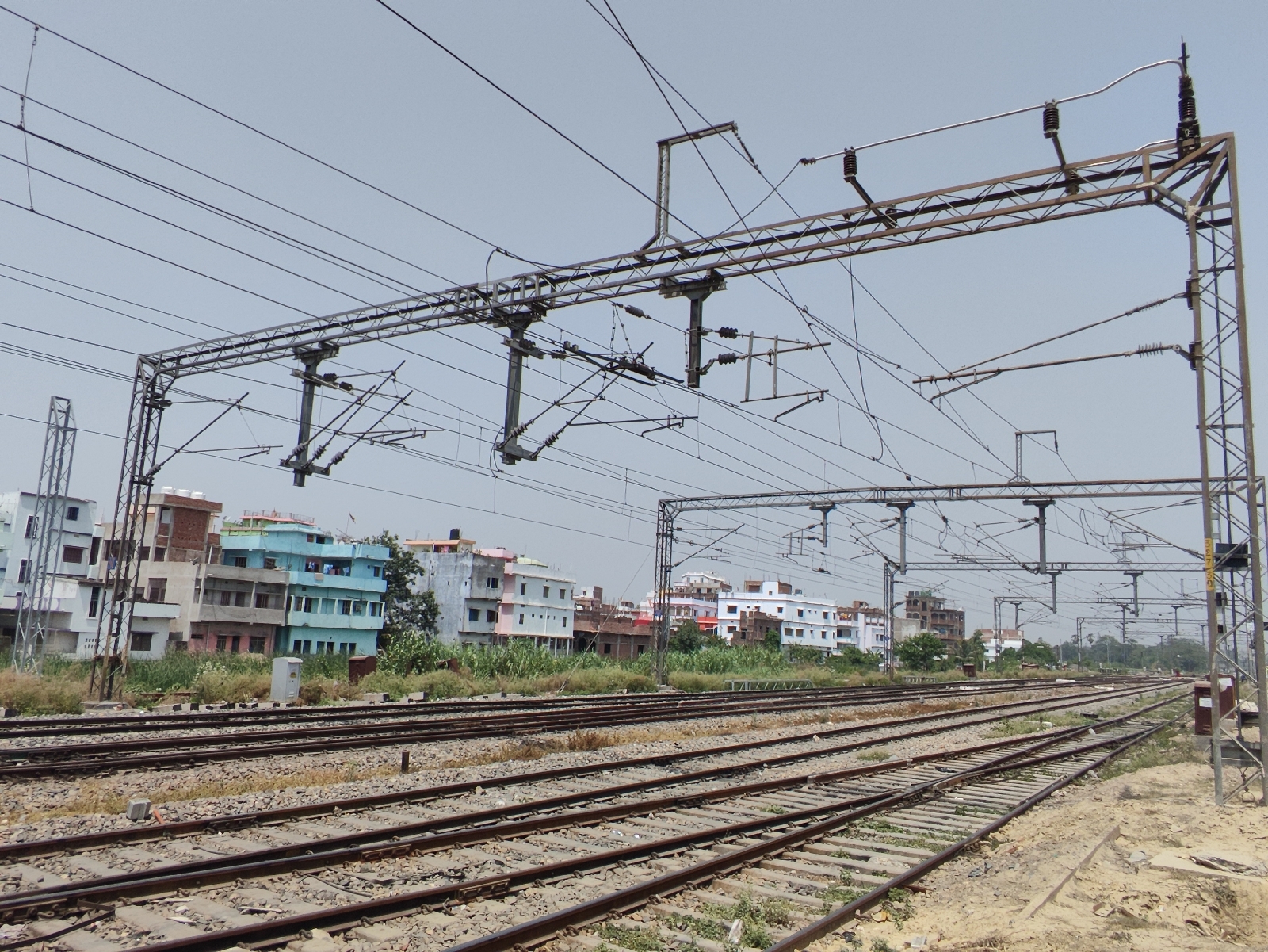OHE Stands for Overhead Equipment. There is a cantilever assembly which hold the assembly of contact wire, catenary wire and dropper. It transfers all vertical load, lateral force and bending moment load through insulator to mast. It is an insulated swiveling type structure member and keeps the overhead catenary system in a position assisting smooth current collection by the pantograph at the designed speed. It is flexible with all joints having swiveling arrangement permitting moving in all direction. There are OHE Structure as PORTAL, MAST, TTC, Portal structures are used to accommodate OHE of many lines where is not possible to erect independent mast due to restriction of track center. MAST – Different type of steel mast which are used in railway are BFB (Broad flanged beam), RSJ (rolled steel joist) and K-Type, B-Type and Fabricated mast. TTC Stands for Two track cantilever in the yards and siding when the mast cannot be erected near the track to be equipped, it may be erected spanning one or two track using a TTC.
Overhead Equipment (OHE) refers to the infrastructure and equipment used in railway systems for the electrification and power supply of trains. OHE is typically installed above the tracks and provides the necessary electrical power to propel and operate electric trains.
The primary purpose of OHE is to supply electric power to trains, replacing the need for diesel or other fuel-based engines. It enables trains to run on electricity, which offers several advantages such as reduced emissions, increased efficiency, and quieter operation compared to traditional fossil fuel-powered trains.
The OHE system consists of various components, including:
Overhead wires/Catenary: These are suspended cables or wires positioned above the tracks. They carry the electric current from the power source to the trains. The overhead wires are typically made of copper or aluminum and are designed to handle the required voltage and current.
Contact wire: The contact wire is a specific wire within the overhead wires. It is the point of contact for the pantograph, which is mounted on the train's roof and collects the electric current from the contact wire.
Cantilevers/Masts: These are the supporting structures installed alongside the tracks to hold and maintain the overhead wires in the desired position and alignment. Cantilevers or masts are usually made of metal or concrete and are spaced at regular intervals.
Insulators: Insulators are used to electrically isolate the overhead wires from the supporting structures. They prevent the flow of electric current into the cantilevers or masts, ensuring the current is directed only to the contact wire.
Tensioning devices: Tensioning devices are used to maintain the proper tension of the overhead wires. They ensure that the wires remain in the correct position and alignment despite external factors such as temperature changes and wind.
The OHE system requires careful engineering and maintenance to ensure safe and reliable power supply to trains. Regular inspections and upkeep are necessary to identify and address any issues that may arise, such as wire wear, tension loss, or damage to the supporting structures.
Overall, Overhead Equipment plays a vital role in electrified railway systems, enabling the efficient and eco-friendly operation of electric trains by providing them with the necessary power supply.
Railway OHE




إرسال تعليق